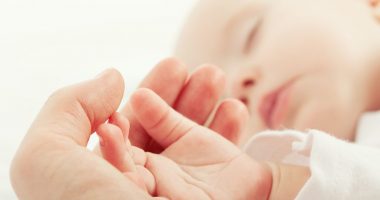Rare Case of Hearing Loss and Lung Inflammation Found in Girl with Bardet-Biedl Syndrome

A new case report described the rare case of a girl with Bardet-Biedl syndrome (BBS) who experienced hearing loss and bronchopneumonia.
The research, “A Unique Manifestation of Bardet-Biedl Syndrome with Otolaryngologic Symptoms and Bronchopneumonia in a One-year-old Girl,” was published in the journal Cureus, and illustrates the occurrence of BBS in children without consanguineous parents.
BBS is a rare genetic disorder whose symptoms include obesity, vision loss, and intellectual disability. Kidney failure is the most common cause of morbidity in these patients. In 30% to 60% of cases, renal anomalies are a key cause of organ failure.
Researchers in Pakistan reported the case of a one-year-old girl who had BBS with unique clinical features. She showed otolaryngologic (ears, nose, and neck) symptoms and bronchopneumonia, an infection in the lungs and the most common clinical manifestation of pneumonia in children. She experienced worsening breathing and continuous fever, and was seen at the pediatric outpatient clinic of Dr. Ruth KM Pfau, Civil Hospital Karachi.
Multiple clinical features indicated that the girl had BBS. She was obese (15 kg or 33 pounds, which is above the 95th percentile for her age group) and showed polydactyly (having more than five fingers or toes) in her left foot. Also, her pupils reacted to but did not follow light, indicating reduced visual acuity.
An eye exam revealed dark pigments in her retina, which suggested early retinitis pigmentosa, a disorder that causes vision loss. Along with bronchopneumonia, this further supported the diagnosis of BBS.
Ultrasound testing showed that the girl’s left kidney was dysplastic, meaning it had abnormal development. The level and clearance of creatinine were higher than normal, further indicating renal dysfunction.
In addition, a hearing test, known as Brainstem Evoked Response Audiometry, identified sensory-neural hearing loss in both ears, which is caused by damage to the inner ear or to the nerve connecting the ear to the brain. The co-existence of sensorineural hearing loss and BBS is very rare, the researchers said.
The girl was initially treated with oxygen, amoxicillin/clavulanic acid, and acetaminophen. She also received anti-hypertensive medications, leading to rapid improvement and no recurrence of respiratory complications. By the end of the study, she had been referred for dialysis. Visual and hearing aids, mobility training, and speech therapy were also being considered. As well, she was started on an appropriate diet to manage her obesity.
BBS diagnosis in the first year of life is rare, the scientists said. Most cases occur in children of consanguineous marriage, which was not the case with the girl. There was also no significant family history of the disease, with the exception of an older sibling who was obese, and had polydactyly and a vision problem.
This case study “adds to the existing scientific literature on BBS and highlights the need to consider BBS in patients who are not a product of consanguineous marriage,” the researchers wrote.
“Genetic counseling of family to inform them about the possible risk of this condition in the future child is vital,” they said, adding that early diagnosis and proper management can improve quality of life and prolong the lifespan of these patients.




